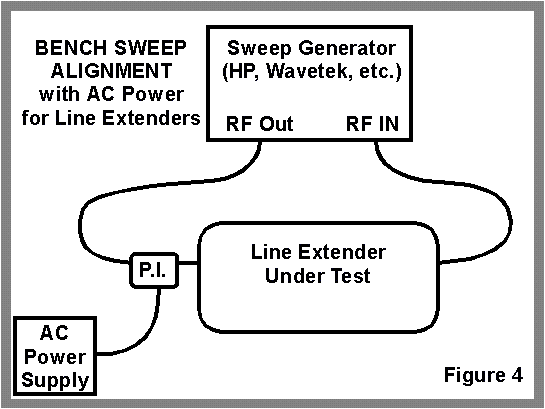| If you have any doubts about the test cables being foam versus
solid dielectric, the RF bridge can demonstrate some things to you. Cut some short
pieces of drop cable of 10, 15 and 20 feet in length. Install connectors on each
cable, then connect them one at a time to the test port of the RF bridge. Connect a
barrel and terminator to each cable and observe the return loss and any sine wave shape
that may be present in the reflected energy through each piece of cable. Now
compare the return loss with each piece of cable between the RF bridge and the test
amplifier. And the last test, as each piece of cable is attached to the bridge test
port, observe the reflected sweep signal with the free end of the cable first shorted then
with no connection (open). Did you see the phase inversion of the sine wave
response? Now imagine that the sine wave shape you have seen in all these tests are
part of your test bench because they were "convenient lengths" of drop cable.
These errors would be aligned into the amplifier under test to produce a
"flat" response. When the amplifier gets installed in the real world, the
"flat response" reveals itself as the opposite of the sine wave error produced
by the poor cables on the test bench. That is what this whole article is about! |
